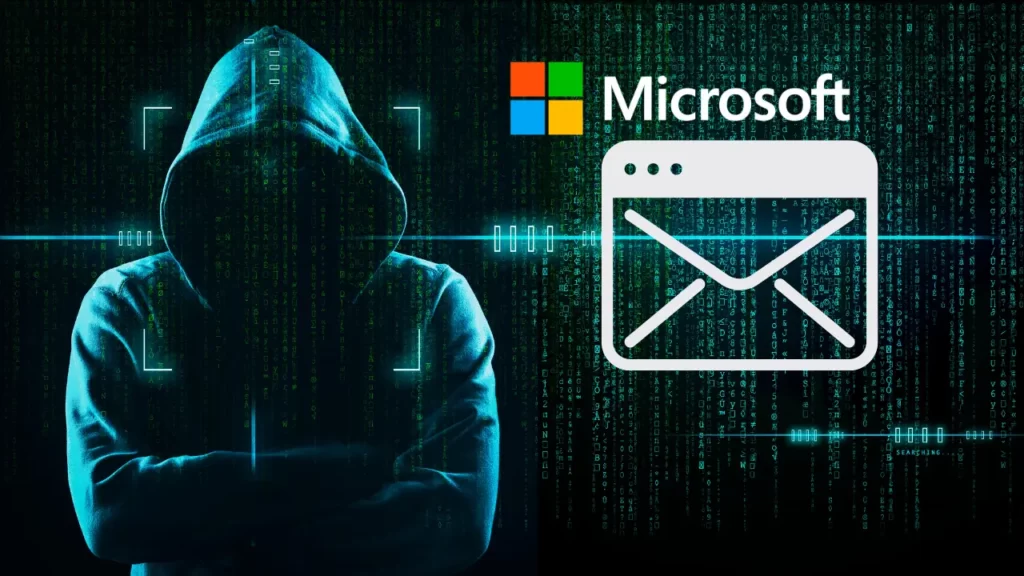A chain of unfortunate events and mistakes allowed a hacking group with alleged ties to China to pilfer. A crucial key that granted extensive access to Microsoft’s email systems, including those used by the U.S. government. Microsoft recently provided an eagerly awaited blog post detailing how the hackers executed this Microsoft Email heist. Shedding light on one aspect of the mystery while leaving other critical questions unanswered.
To recap, in July, Microsoft revealed that a hacking group it refers to as Storm-0558. Suspected of being linked to China,. Had “acquired” an email signing key essential for securing consumer email accounts such as Outlook.com. Utilizing this digital master key. The hackers infiltrated both personal and enterprise email accounts belonging to government officials hosted on Microsoft’s platform. This intrusion was perceived as a targeted espionage endeavor aimed at monitoring unclassified emails of U.S. government officials and diplomats. Allegedly including figures like U.S. Commerce Secretary Gina Raimondo and U.S. Ambassador to China Nicholas Burns.
The mystery surrounding how the hackers gained possession of this consumer email signing key remained unsolved. Even for Microsoft, until recently. The tech giant outlined five separate issues that ultimately led to the key’s leakage.
How Microsoft’s System Unwittingly Revealed Signing Key
According to Microsoft’s blog post. In April 2021, a component involved in the consumer key signing process experienced a crash. Resulting in a snapshot image of the system for later analysis. This consumer key signing system was housed in a “highly isolated and restricted” environment devoid of internet connectivity to defend against cyberattacks. Unbeknownst to Microsoft, when the system crashed, the snapshot image unintentionally included a copy of the consumer signing key. Unfortunately, Microsoft’s systems failed to detect the presence of the key within the snapshot.
Subsequently, this snapshot image was moved from the isolated production network to Microsoft’s debugging environment on the internet-connected corporate network to investigate the cause of the system crash. A process consistent with Microsoft’s standard debugging procedures. However, Microsoft’s credential scanning methods also failed to detect the key’s presence within the snapshot image.
At some point after the snapshot image’s relocation to Microsoft’s corporate network in April 2021. The Storm-0558 hackers apparently managed to “successfully compromise” a corporate account belonging to a Microsoft engineer. This account had access to the debugging environment housing the snapshot image containing the consumer signing key. While Microsoft cannot definitively confirm this as the mechanism by which the key was stolen due to a lack of specific evidence in the logs. It is considered the most likely method employed by the attackers.
Microsoft’s Failure to Validate Consumer Signing Key
Regarding how the consumer signing key provided access to enterprise and corporate email accounts of various organizations and government departments. Microsoft revealed that its email systems failed to automatically and correctly validate the key. This oversight meant that Microsoft’s email system would accept requests for enterprise email using a security token signed with the consumer key.
While this explanation resolves one aspect of the mystery. The precise methods used by the intruders to breach Microsoft’s systems remain unclear. When questioned, Jeff Jones, a senior director at Microsoft. Mentioned that the engineer’s account was compromised through “token-stealing malware” but declined to elaborate further.
Token-stealing malware, often delivered through phishing or malicious links, seeks out session tokens on a victim’s device. Session tokens are small files that allow users to remain continuously logged in without the need to repeatedly enter a password or reauthorize via two-factor authentication. Therefore, stolen session tokens can provide an attacker with the same level of access as the user without requiring their password or two-factor code.
Lessons from the Breach
This incident highlights the importance of understanding how the Microsoft engineer’s account was compromised. As it could assist network defenders in preventing similar future breaches. It remains uncertain whether the engineer’s work-issued computer was compromised or if it involved a personal device permitted on Microsoft’s network. Nonetheless, the focus on an individual engineer seems somewhat unfair. As the true culprits behind the breach are the network security policies that failed to thwart the intrusion. Despite the high level of expertise exhibited by the attackers.
What is evident is that cybersecurity poses formidable challenges, even for corporate giants like Microsoft with vast resources at their disposal. Microsoft’s engineers diligently considered a wide array of complex threats and cyberattacks when designing safeguards for the company’s most critical systems, even though those defenses ultimately proved inadequate. Whether the Storm-0558 group knew they would stumble upon the keys to Microsoft’s email kingdom during their network intrusion or it was a stroke of luck and perfect timing, it serves as a stark reminder that cybercriminals often need to succeed only once.
This Microsoft Email heist and its circumstances defy easy comparison or analogy. It is possible to acknowledge the impressive security measures employed by a bank’s vault while also recognizing the determination and cunning of the thieves who managed to pilfer its contents.
The full extent of this espionage campaign will likely take time to uncover, and the identities of other victims whose emails were accessed have yet to be publicly disclosed. The Cyber Security Review Board, composed of security experts tasked with understanding lessons learned from significant cybersecurity incidents, has committed to investigating the Microsoft Email heist and conducting a broader review of issues related to cloud-based identity and authentication infrastructure.



